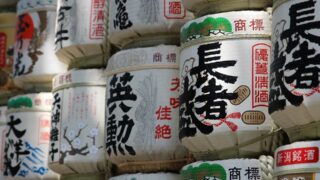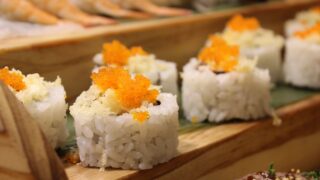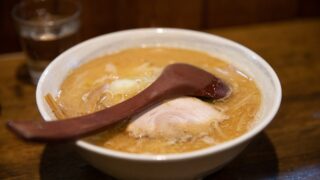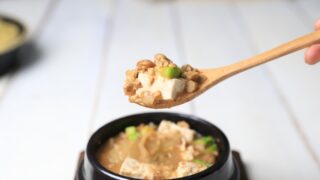[ad_1]
Japanese cuisine is known for its unique and delicate flavors, many of which are achieved through the process of fermentation. From soy sauce to sake, the Japanese have been fermenting foods and beverages for centuries, creating a rich tradition of fermented foods that are not only delicious but also packed with health benefits.
One of the key ingredients in Japanese fermentation is koji, a type of mold that is used to ferment various foods such as soybeans, rice, and barley. The use of koji in Japanese cuisine dates back over a thousand years, and it is the foundation of many traditional Japanese fermented foods.
What is Koji?
Koji is a type of mold, specifically Aspergillus oryzae, that is cultivated on various grains such as rice, barley, and soybeans. It is commonly used in Japanese cuisine to ferment foods such as soybeans, creating products like miso, soy sauce, and sake.
The koji mold produces enzymes that break down the starches and proteins in the grains, transforming them into flavorful and nutritious fermented foods. This process not only enhances the taste of the foods but also makes them more digestible and increases their nutritional value.
Traditional Japanese Fermented Foods
There are several traditional Japanese fermented foods that are made using koji as a key ingredient. Some of the most well-known include:
- Miso: Miso is a traditional Japanese seasoning made by fermenting soybeans with salt and koji. It is used in soups, marinades, sauces, and dressings, adding a rich and savory flavor to dishes.
- Soy Sauce: Soy sauce, or shoyu, is a staple condiment in Japanese cuisine, made by fermenting soybeans and wheat with koji and salt. It is used to season a wide variety of dishes, from sushi to stir-fries.
- Sake: Sake is a traditional Japanese rice wine made by fermenting polished rice with koji mold. It is commonly enjoyed as a beverage, but it is also used in cooking to enhance the flavor of dishes.
- Amazake: Amazake is a sweet fermented rice drink made by fermenting rice with koji mold. It is often served as a warm beverage and is prized for its sweet and creamy flavor.
The Health Benefits of Japanese Fermented Foods
Japanese fermented foods offer a wide range of health benefits, thanks to the fermentation process and the presence of beneficial microorganisms. Some of the key health benefits of these foods include:
- Improved Digestion: The fermentation process breaks down the complex carbohydrates and proteins in the foods, making them easier to digest and increasing the bioavailability of nutrients.
- Enhanced Nutritional Value: Fermentation increases the levels of certain vitamins and minerals in the foods, making them more nutritious and beneficial for overall health.
- Probiotic Benefits: Fermented foods are rich in beneficial bacteria that support gut health and immune function, promoting a healthy microbiome and overall well-being.
- Antioxidant Properties: Some fermented foods, such as miso and amazake, contain antioxidants that help to protect cells from damage and reduce the risk of chronic disease.
How to Incorporate Japanese Fermented Foods Into Your Diet
If you’re interested in incorporating Japanese fermented foods into your diet, there are plenty of delicious and healthy options to choose from. You can add miso to soups and marinades, use soy sauce as a seasoning for stir-fries and sushi, enjoy sake as a beverage or cooking ingredient, and try amazake as a sweet and nutritious treat.
There are also many modern recipes and creative uses for Japanese fermented foods, such as miso caramel sauce, sake-infused desserts, and amazake smoothies. Experimenting with these traditional ingredients can add depth and complexity to your cooking, while also providing a range of health benefits.
Conclusion
Japanese fermented foods, including those made with koji, are a cornerstone of Japanese cuisine and offer a wide range of flavors, textures, and health benefits. From miso to soy sauce to sake, these traditional fermented foods have been enjoyed for centuries and continue to be an important part of Japanese culture and cuisine. By incorporating these foods into your diet, you can experience the unique flavors and nutritional benefits of these ancient traditions.
FAQs
1. Are Japanese fermented foods safe to eat?
Yes, Japanese fermented foods are generally safe to eat and are considered to be a healthy part of the Japanese diet. However, it is important to be mindful of any allergies or sensitivities you may have to specific ingredients, such as soy or gluten, which are commonly found in fermented foods.
2. Can I make my own Japanese fermented foods at home?
Absolutely! Making Japanese fermented foods at home can be a rewarding and delicious experience. There are many recipes and tutorials available for making your own miso, soy sauce, sake, and other fermented foods using koji mold. Just be sure to use proper hygiene and sanitation practices to ensure the safety of your homemade ferments.
3. How long do Japanese fermented foods last?
Japanese fermented foods have a long shelf life due to the fermentation process, which helps to preserve them. Miso, soy sauce, and sake can last for months or even years when stored properly. However, it’s important to follow the recommendations for storage and use provided by the manufacturer or recipe to ensure the quality and safety of the fermented foods.
[ad_2]











Comments